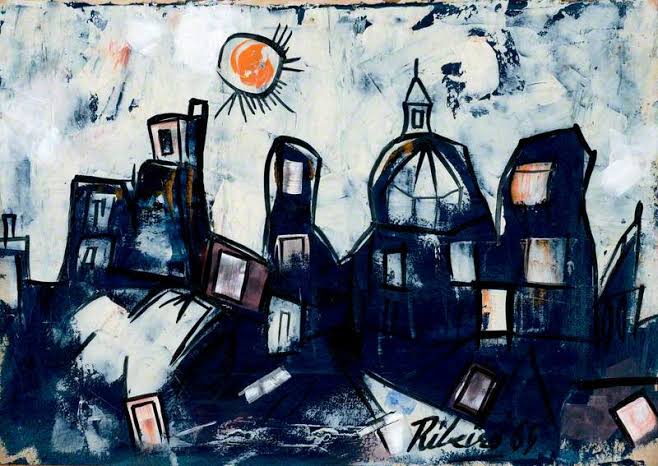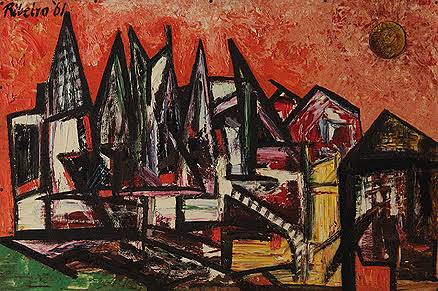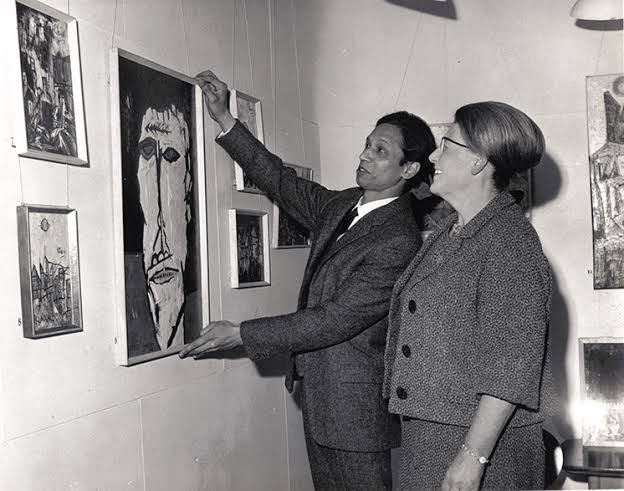Pratiksha Shome
“Painting was his life and obsession and if he was ever away from his paints, he would become extremely restless.” A private diary scribbling found after his death encapsulated his feelings towards his work: “I twist and turn, curve and straighten without aim or result. Just an escape, an escapist thing into painting impulsively, compulsively, endlessly, tired, tirelessly with or without joy.” Daughter of Riberio.
Lancelot Ribeiro was born in Bombay in 1933 to a Goan Catholic family. His creative inclinations were originally sparked while he was studying accountancy in Britain in 1950. He gave up his career in accounting and instead took life drawing workshops at St. Martin’s from 1951 to 1953. He then travelled extensively around Europe before coming back to Bombay in 1955 to work in insurance.
He held a one-man exhibition in the Bombay Art Society Salon in 1960, which was a smashing success and sold out in its entirety. This fueled his resolve to leave accountancy and transition into the world of professional painting.

As a result of the exhibition’s success, he was hired to paint a 12-foot mural for Tata Iron and Steel, and the nuclear scientist Homi Bhabha became one of his most ardent supporters, purchasing and commissioning numerous of his paintings. Five more of his exhibitions were held in Bombay, New Delhi, and Calcutta after the one at the Bombay Art Society. Following his inclusion in the 1961 exhibition “Ten Indian Painters,” Ribeiro went on a lengthy tour of India, Europe, the US, and Canada.
Ribeiro moved to London permanently in 1962 and shared a residence with his half-brother, the painter Francis Newton Souza, working as both an assistant and an independent artist. Even his earliest surviving paintings, which he had first painted in traditional oils, exhibit artistic independence, fusing popular Indian graphic art with aspects of New York Abstract Expressionism and Bernard Buffet’s skeletal draftsmanship.
He grew restless in the 1960s with the length of time it took for oils to dry and the lack of brilliance in their colour possibilities. As a result, he jumped at the chance to use the brand-new synthetic plastic bases that were being used for commercial paintings.
He collaborated with large manufacturing firms like ICI, Courtaulds, and Geigy, which provided him with samples of their most recent paint formulations.

He spoke on Indian art and culture at a Commonwealth Institute event in 1972. He was a founding member of the Rainbow Art Group, a multiracial art collective, in 1976, and he established the Indian Artists United Kingdom Group in 1978. In the 1980s, he mostly participated in mixed exhibitions in London, but he also had significant solo exhibitions at the Gardner Arts Centre in Brighton (1973), Abbot Hall Art Gallery in Kendal (1978), and Leicestershire Museum and Art Gallery in Leicester (1980), which included a retrospective of his work from 1960 to 1986. In 1987, the Camden Art Centre hosted a sizable exhibition of his work.
Ribeiro was the focus of the yearly show at Asia House in 2013. A significant retrospective of his work called Restless Ribeiro, An Indian Artist in Britain featured several pieces from his estate that received recognition from critics everywhere.





